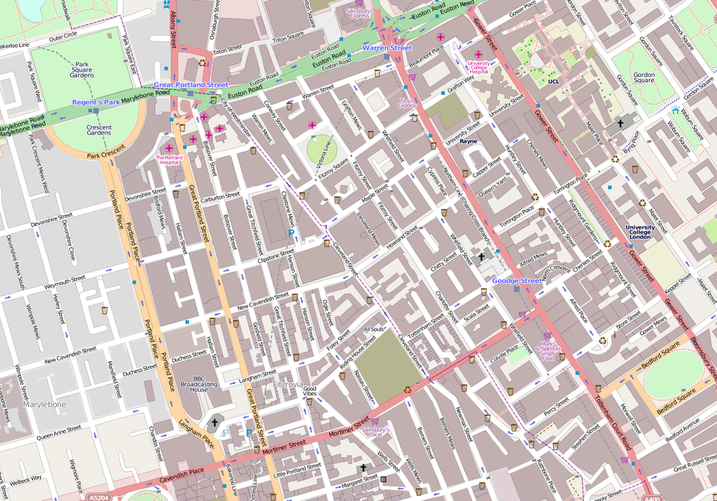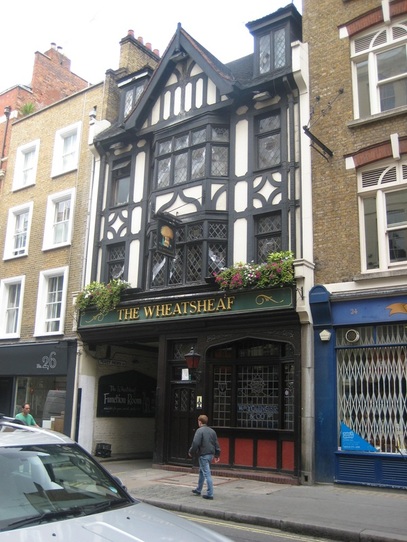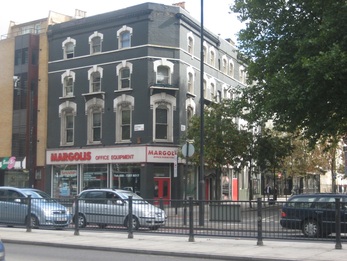I slington is a place where people start and Barnsbury is one where the crooks finally go , if we look at Brixton it is where dreams never begin so never die and Chelsea believe it or not is a place where real Londoners live.
But Fitzrovia is a space that hides those of dubious professions; it could also be viewed as a space into which people sink never to be found again. Yet, Nina sinking fast is one of the few characters in the saloon bar who has the potential to engage the reader’s sympathy. There is a sense of pathos about this woman and her inability to understand the gap between her legs and artistic hopes and reality.Maybe used very often as a quick fuck but also prized for company and fun.
Twenty-three years after her first book Laughing Torso was published, Hamnett, in poor health, released a follow up book aptly titled: Is She a Lady?
.At three in the morning…I crawled up the stairs and climbed into Nina’s bed with all my clothes on. She was bundled up in the other room. I heard a mouse poking his nose around her drawings. I struck a match and noticed little deposits of rat turds on the bed. The pillow crawled. I started to scratch myself. From the next room I heard the moan of a woman who finds a man too heavy, too pleasurable, or herself delighted. Nina had a man in bed. The bed squeaked. She kept up a running line of chatter. More moans. I decided to leave.
I struck a match and noticed little deposits of rat turds on the bed. The pillow crawled. I started to scratch myself. From the next room I heard the moan of a woman who finds a man too heavy, too pleasurable, or herself delighted. Nina had a man in bed. The bed squeaked. She kept up a running line of chatter. More moans. I decided to leave.
It hadn’t always been like this. Oh Nina had always been careless about hygiene, and was certainly never one to decline a drink or a handsome stranger, but there was a time when she was not to be pitied but envied.
This first half of Hamnett’s life was lived at such a pace, and with such hunger for novelty and passion and adventure and laughter…and then suddenly seemed to stop dead. By the late 1940s she was living in squalor and penury, much of her time spent in the pubs of London’s Fitzrovia , exchanging anecdotes of her glory years for drinks. And when she talked about her pre-war exploits she wasn’t necessarily referring to the most recent war.
, exchanging anecdotes of her glory years for drinks. And when she talked about her pre-war exploits she wasn’t necessarily referring to the most recent war. There are quite a number of pubs in Fitzrovia - the area west of Tottenham Court Road - and, as his biographers have established, Patrick Hamilton
There are quite a number of pubs in Fitzrovia - the area west of Tottenham Court Road - and, as his biographers have established, Patrick Hamilton  knew this area, and its bars, well. The Fitzroy Tavern was even in the 1920s a well-known drinking place, courtesy of its legendary landlord, Judah ‘Pop’ Kleinfeld.
knew this area, and its bars, well. The Fitzroy Tavern was even in the 1920s a well-known drinking place, courtesy of its legendary landlord, Judah ‘Pop’ Kleinfeld. The interior of the Hamilton-s Midnight Bell has a physical resemblance to that of the Fitzroy, certainly closer than any other pub in the area. The Wheatsheaf,
The interior of the Hamilton-s Midnight Bell has a physical resemblance to that of the Fitzroy, certainly closer than any other pub in the area. The Wheatsheaf, just down the road from The Fitzroy Tavern on Rathbone Place, also offers a close match - and a resemblance too in its landlord and family. This is Hamilton’s account of the publican at the Midnight Bell.]he Governor and his wife […] were as benign as they were bloated. It was pretty obvious to everybody that they might both burst at any moment.
just down the road from The Fitzroy Tavern on Rathbone Place, also offers a close match - and a resemblance too in its landlord and family. This is Hamilton’s account of the publican at the Midnight Bell.]he Governor and his wife […] were as benign as they were bloated. It was pretty obvious to everybody that they might both burst at any moment.
The Governor’s Wife’s Sister was a different proposition altogether. She was, to begin with thin. She was also dark, and tall, and bony, and ugly. She was, however, all-powerful — the true ruler and organiser of The Midnight Bell. She had, it was widely known, a Head for Business. (Hamilton 18-19)
That bears more than passing similarity to the management at the Wheatsheaf, described by Paul Willetts in his biography of another Fitzrovia writer and drinker, Julian Maclaren-Ross:

The landlady was a short, plump spinster named Mona Glendenning, who ran the place in conjunction with her similarly rotund brother, Redvers, and his wife Frances, a spindly woman in a tweed suit and pince-nez[…]The Wheatsheaf’s comparative distance from the West End meant that few of the foreigners or the whores found there way there. (Willetts 141)
Indeed, the description could equally apply to Charlie and Annie Fairchild at the Fitzroy Tavern. The exact location of the Midnight Bell, however, doesn’t quite fit either of these pubs. In the first chapter, the noise of the traffic from the Euston Road can be heard in Bob’s upstairs room: ‘[t]he thundering of the wind in his dream was the passing of a lorry in the Euston Road outside’ . From the bar can be heard the sounds of ‘the dim roar of traffic in the Tottenham Court Road – the far thunder of trams in where the Hampstead Road began – the yelling of children in Warren Street nearby [sic]’
. Later Bob decides to make a phone call to Jenny: ‘[h]e was going to use the box at Great Portland Street Station. The walk would take him about three and a half minutes’ . This would put the pub at a point halfway between Great Portland Street station and Warren Street station. There was a pub at roughly this spot in the 1930s – the Goat and Compasses at 341 Euston Road , now an office supplies shop.
, now an office supplies shop.
Hamilton’s Fitzrovia represents a post-war bohemian space. The Midnight Bell is set in the late 1920s, and many of the men who drink at the bar are of an age to have served in France or Flanders. The companionship of the bar becomes a recreation of the sense of comradeship experienced in the trenches. The landlord, the ‘guv’nor’, becomes a symbolic reconstruction of the officer. Drink becomes a means of anaesthetising memories. This oblivion of memory becomes then the guiding imperative for those who drink in the Midnight Bell.
After the last round Nina would stumble home to her filthy bedsit, not infrequently accompanied by a fleeting acquaintance. It was around this time that a landlady took her to court for urinating in the sink of said bedsit, but the case was dismissed by the magistrate who thought such an action logistically impossible for a lady.
By now Nina Hamnett was both relic and (barely) living treasure. If she had proved an unreliable witness to her own life, there were plenty of others to memorialise her, and she had at least a walk-on part in many accounts of the era. She also appeared thinly disguised in fictional portrayals of the Fitzrovian set, and it was one of these that in all likelihood inspired her horrific death, an act as chaotic and impulsive as her life had been.A radio play broadcast in December 1956 featured a character intended as an affectionate parody of Hamnett, but the portrayal of her drunken dissolution proved devastating for its model. She fell or — as most assumed — jumped from her window and was impaled on the railing spikes below. She lingered miserably in hospital for three days before dying.
Even in the depths of squalor Hamnett never pitied herself and we shouldn’t either. She fit more living in one of her Paris sojourns than most of us do in a lifetime, and as the Times obituary noted, “Miss Hamnett was a complete success as a person; generous, good humoured, loyal, and witty.” Her work was widely exhibited during World War 1 in London and Paris and she also taught at The Westminster Technical Institute from 1917 to 1918. Following her divorce she had a love affair with the composer E J Moeran.
and as the Times obituary noted, “Miss Hamnett was a complete success as a person; generous, good humoured, loyal, and witty.” Her work was widely exhibited during World War 1 in London and Paris and she also taught at The Westminster Technical Institute from 1917 to 1918. Following her divorce she had a love affair with the composer E J Moeran.
But Fitzrovia is a space that hides those of dubious professions; it could also be viewed as a space into which people sink never to be found again. Yet, Nina sinking fast is one of the few characters in the saloon bar who has the potential to engage the reader’s sympathy. There is a sense of pathos about this woman and her inability to understand the gap between her legs and artistic hopes and reality.Maybe used very often as a quick fuck but also prized for company and fun.

Twenty-three years after her first book Laughing Torso was published, Hamnett, in poor health, released a follow up book aptly titled: Is She a Lady?

.At three in the morning…I crawled up the stairs and climbed into Nina’s bed with all my clothes on. She was bundled up in the other room. I heard a mouse poking his nose around her drawings.
 I struck a match and noticed little deposits of rat turds on the bed. The pillow crawled. I started to scratch myself. From the next room I heard the moan of a woman who finds a man too heavy, too pleasurable, or herself delighted. Nina had a man in bed. The bed squeaked. She kept up a running line of chatter. More moans. I decided to leave.
I struck a match and noticed little deposits of rat turds on the bed. The pillow crawled. I started to scratch myself. From the next room I heard the moan of a woman who finds a man too heavy, too pleasurable, or herself delighted. Nina had a man in bed. The bed squeaked. She kept up a running line of chatter. More moans. I decided to leave.
It hadn’t always been like this. Oh Nina had always been careless about hygiene, and was certainly never one to decline a drink or a handsome stranger, but there was a time when she was not to be pitied but envied.
This first half of Hamnett’s life was lived at such a pace, and with such hunger for novelty and passion and adventure and laughter…and then suddenly seemed to stop dead. By the late 1940s she was living in squalor and penury, much of her time spent in the pubs of London’s Fitzrovia
 , exchanging anecdotes of her glory years for drinks. And when she talked about her pre-war exploits she wasn’t necessarily referring to the most recent war.
, exchanging anecdotes of her glory years for drinks. And when she talked about her pre-war exploits she wasn’t necessarily referring to the most recent war. knew this area, and its bars, well. The Fitzroy Tavern was even in the 1920s a well-known drinking place, courtesy of its legendary landlord, Judah ‘Pop’ Kleinfeld.
knew this area, and its bars, well. The Fitzroy Tavern was even in the 1920s a well-known drinking place, courtesy of its legendary landlord, Judah ‘Pop’ Kleinfeld. just down the road from The Fitzroy Tavern on Rathbone Place, also offers a close match - and a resemblance too in its landlord and family. This is Hamilton’s account of the publican at the Midnight Bell.]he Governor and his wife […] were as benign as they were bloated. It was pretty obvious to everybody that they might both burst at any moment.
just down the road from The Fitzroy Tavern on Rathbone Place, also offers a close match - and a resemblance too in its landlord and family. This is Hamilton’s account of the publican at the Midnight Bell.]he Governor and his wife […] were as benign as they were bloated. It was pretty obvious to everybody that they might both burst at any moment.The Governor’s Wife’s Sister was a different proposition altogether. She was, to begin with thin. She was also dark, and tall, and bony, and ugly. She was, however, all-powerful — the true ruler and organiser of The Midnight Bell. She had, it was widely known, a Head for Business. (Hamilton 18-19)
That bears more than passing similarity to the management at the Wheatsheaf, described by Paul Willetts in his biography of another Fitzrovia writer and drinker, Julian Maclaren-Ross:

The landlady was a short, plump spinster named Mona Glendenning, who ran the place in conjunction with her similarly rotund brother, Redvers, and his wife Frances, a spindly woman in a tweed suit and pince-nez[…]The Wheatsheaf’s comparative distance from the West End meant that few of the foreigners or the whores found there way there. (Willetts 141)
Indeed, the description could equally apply to Charlie and Annie Fairchild at the Fitzroy Tavern. The exact location of the Midnight Bell, however, doesn’t quite fit either of these pubs. In the first chapter, the noise of the traffic from the Euston Road can be heard in Bob’s upstairs room: ‘[t]he thundering of the wind in his dream was the passing of a lorry in the Euston Road outside’ . From the bar can be heard the sounds of ‘the dim roar of traffic in the Tottenham Court Road – the far thunder of trams in where the Hampstead Road began – the yelling of children in Warren Street nearby [sic]’
. Later Bob decides to make a phone call to Jenny: ‘[h]e was going to use the box at Great Portland Street Station. The walk would take him about three and a half minutes’ . This would put the pub at a point halfway between Great Portland Street station and Warren Street station. There was a pub at roughly this spot in the 1930s – the Goat and Compasses at 341 Euston Road
 , now an office supplies shop.
, now an office supplies shop. Hamilton’s Fitzrovia represents a post-war bohemian space. The Midnight Bell is set in the late 1920s, and many of the men who drink at the bar are of an age to have served in France or Flanders. The companionship of the bar becomes a recreation of the sense of comradeship experienced in the trenches. The landlord, the ‘guv’nor’, becomes a symbolic reconstruction of the officer. Drink becomes a means of anaesthetising memories. This oblivion of memory becomes then the guiding imperative for those who drink in the Midnight Bell.
After the last round Nina would stumble home to her filthy bedsit, not infrequently accompanied by a fleeting acquaintance. It was around this time that a landlady took her to court for urinating in the sink of said bedsit, but the case was dismissed by the magistrate who thought such an action logistically impossible for a lady.
By now Nina Hamnett was both relic and (barely) living treasure. If she had proved an unreliable witness to her own life, there were plenty of others to memorialise her, and she had at least a walk-on part in many accounts of the era. She also appeared thinly disguised in fictional portrayals of the Fitzrovian set, and it was one of these that in all likelihood inspired her horrific death, an act as chaotic and impulsive as her life had been.A radio play broadcast in December 1956 featured a character intended as an affectionate parody of Hamnett, but the portrayal of her drunken dissolution proved devastating for its model. She fell or — as most assumed — jumped from her window and was impaled on the railing spikes below. She lingered miserably in hospital for three days before dying.
Even in the depths of squalor Hamnett never pitied herself and we shouldn’t either. She fit more living in one of her Paris sojourns than most of us do in a lifetime,
 and as the Times obituary noted, “Miss Hamnett was a complete success as a person; generous, good humoured, loyal, and witty.” Her work was widely exhibited during World War 1 in London and Paris and she also taught at The Westminster Technical Institute from 1917 to 1918. Following her divorce she had a love affair with the composer E J Moeran.
and as the Times obituary noted, “Miss Hamnett was a complete success as a person; generous, good humoured, loyal, and witty.” Her work was widely exhibited during World War 1 in London and Paris and she also taught at The Westminster Technical Institute from 1917 to 1918. Following her divorce she had a love affair with the composer E J Moeran.
No comments:
Post a Comment